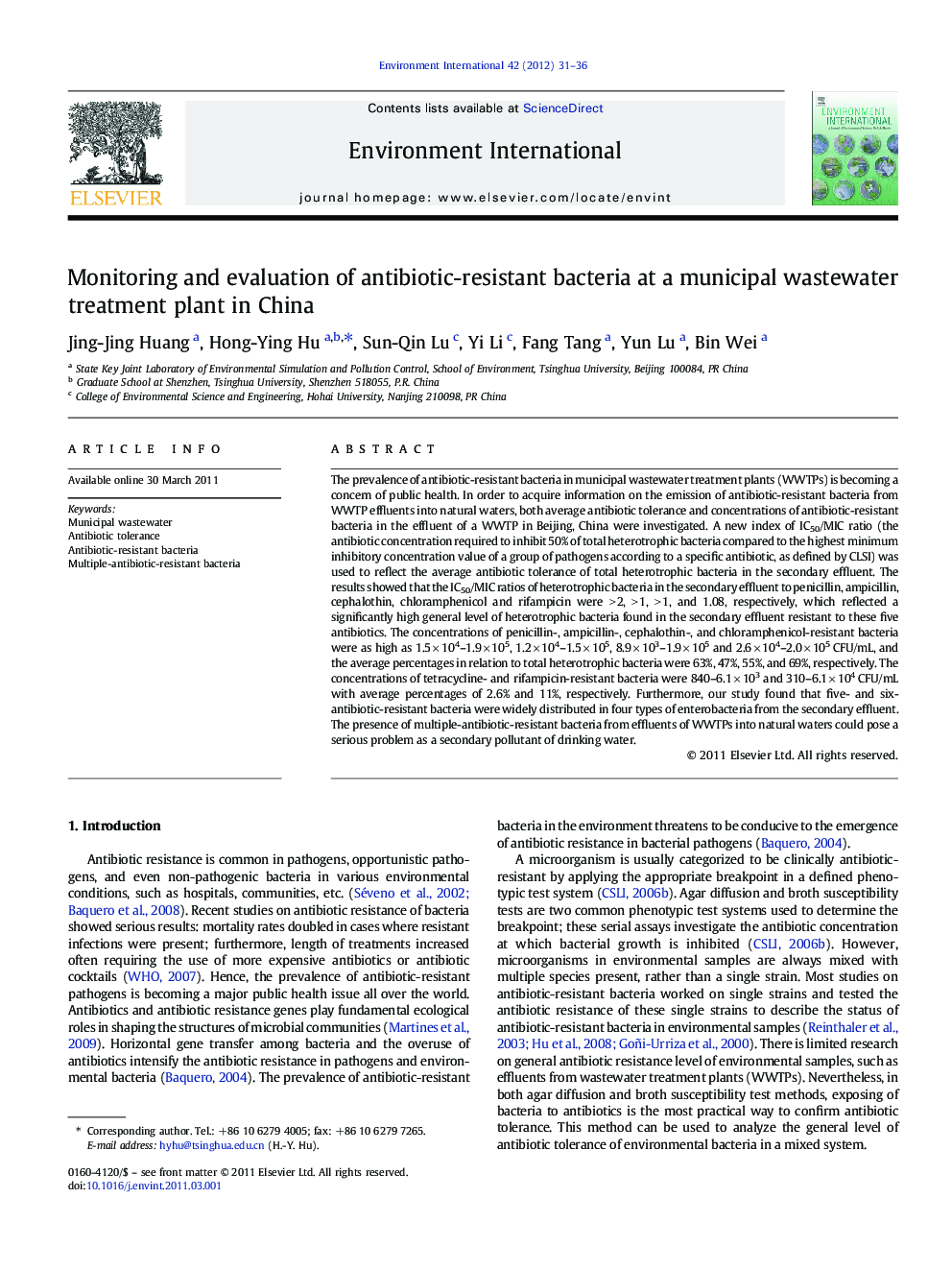| کد مقاله | کد نشریه | سال انتشار | مقاله انگلیسی | نسخه تمام متن |
|---|---|---|---|---|
| 4422962 | 1619085 | 2012 | 6 صفحه PDF | دانلود رایگان |

The prevalence of antibiotic-resistant bacteria in municipal wastewater treatment plants (WWTPs) is becoming a concern of public health. In order to acquire information on the emission of antibiotic-resistant bacteria from WWTP effluents into natural waters, both average antibiotic tolerance and concentrations of antibiotic-resistant bacteria in the effluent of a WWTP in Beijing, China were investigated. A new index of IC50/MIC ratio (the antibiotic concentration required to inhibit 50% of total heterotrophic bacteria compared to the highest minimum inhibitory concentration value of a group of pathogens according to a specific antibiotic, as defined by CLSI) was used to reflect the average antibiotic tolerance of total heterotrophic bacteria in the secondary effluent. The results showed that the IC50/MIC ratios of heterotrophic bacteria in the secondary effluent to penicillin, ampicillin, cephalothin, chloramphenicol and rifampicin were > 2, > 1, > 1, and 1.08, respectively, which reflected a significantly high general level of heterotrophic bacteria found in the secondary effluent resistant to these five antibiotics. The concentrations of penicillin-, ampicillin-, cephalothin-, and chloramphenicol-resistant bacteria were as high as 1.5 × 104–1.9 × 105, 1.2 × 104–1.5 × 105, 8.9 × 103–1.9 × 105 and 2.6 × 104–2.0 × 105 CFU/mL, and the average percentages in relation to total heterotrophic bacteria were 63%, 47%, 55%, and 69%, respectively. The concentrations of tetracycline- and rifampicin-resistant bacteria were 840–6.1 × 103 and 310–6.1 × 104 CFU/mL with average percentages of 2.6% and 11%, respectively. Furthermore, our study found that five- and six-antibiotic-resistant bacteria were widely distributed in four types of enterobacteria from the secondary effluent. The presence of multiple-antibiotic-resistant bacteria from effluents of WWTPs into natural waters could pose a serious problem as a secondary pollutant of drinking water.
Research Highlights
► A new index of IC50/MIC ratio (the antibiotic concentration required to inhibit 50% of total heterotrophic bacteria compared to the highest minimum inhibitory concentration value of a group of pathogens according to a specific antibiotic, as defined by CLSI) was developed to reflect the average antibiotic tolerance of total heterotrophic bacteria in the secondary effluent.
► Both average antibiotic tolerance and concentrations of bacteria resistant to six antibiotics were evaluated in the effluents of the municipal wastewater treatment plant.
► Five- and six-antibiotic-resistant bacteria were widely distributed in four types of enterobacteria from the secondary effluent.
Journal: Environment International - Volume 42, July 2012, Pages 31–36